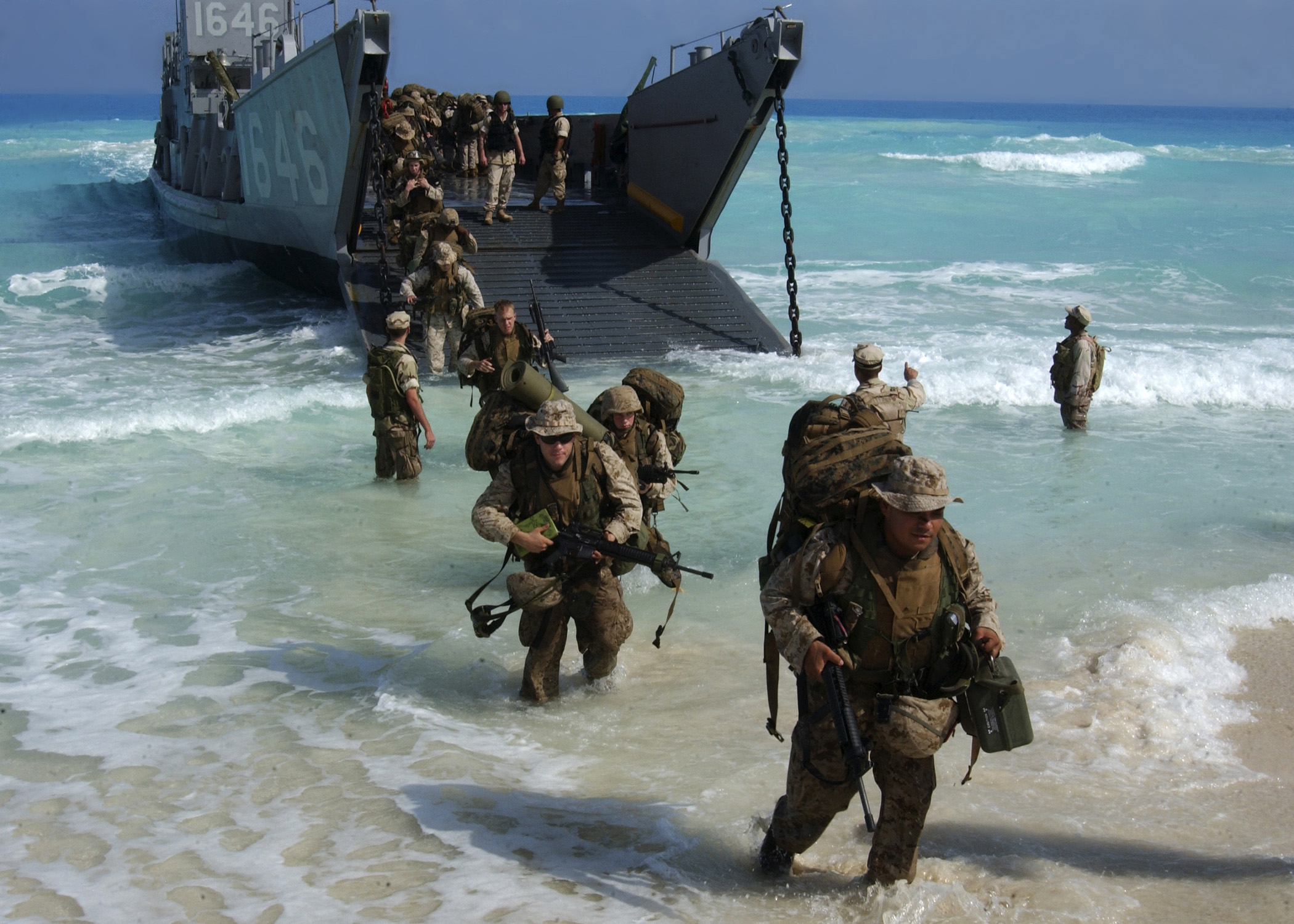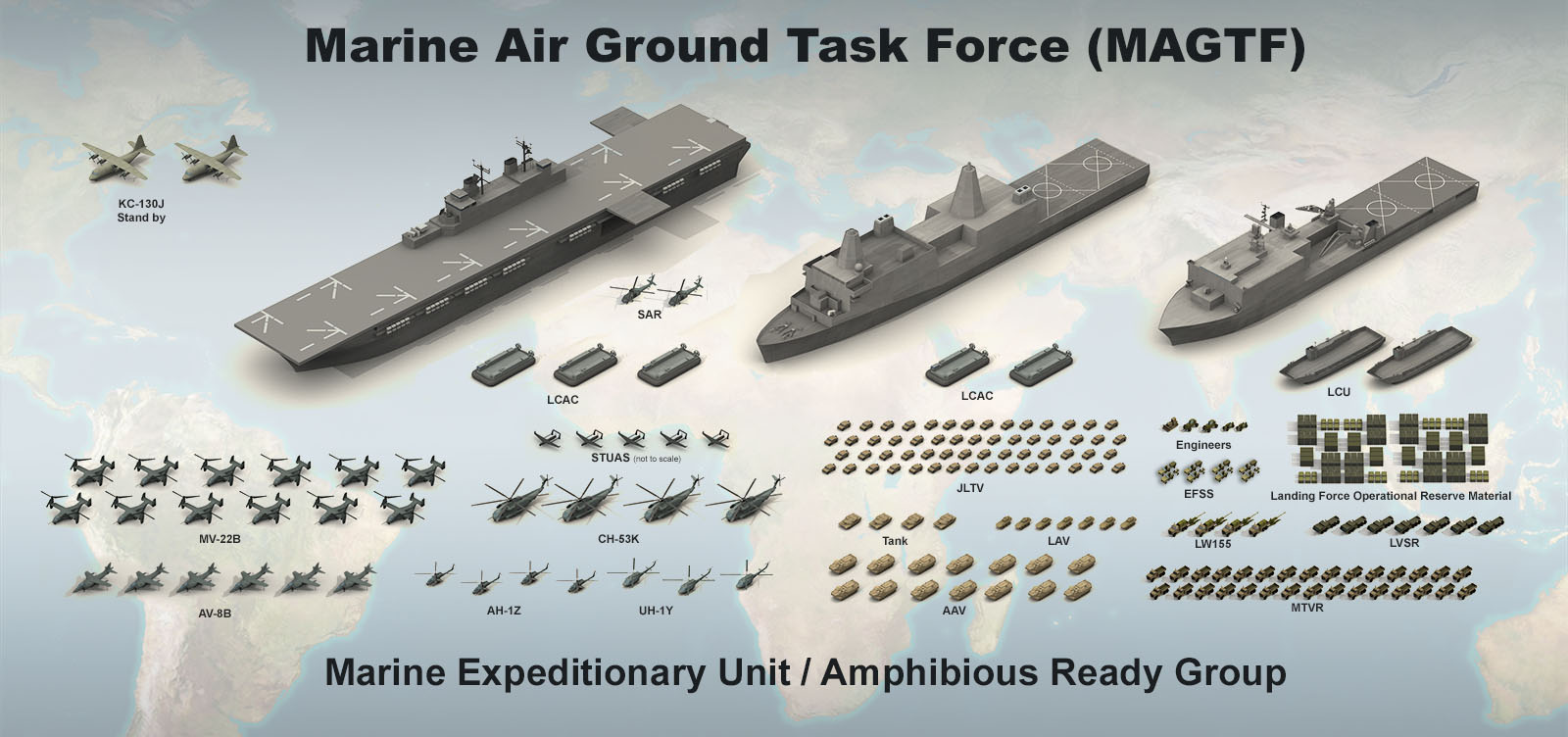
The Basics is the new USNI News video feature in which our staff takes on fundamental concepts, jobs and missions inside the Navy, Marine Corps and Coast Guard and breaks them down for those who might not be as familiar with the ins and outs of the Sea Services. This month we explain the building blocks of the U.S. Marine Corps, the Marine Air-Ground Task Force, with Col. Patrick Keane, the Deputy Director of the MAGTF Staff Training Program at Marine Corps Base Quantico, Va.
The MAGTF (pronounced MAG-TAF) is the soul of how the Marines organize themselves, from the 500 Marine special purpose units forward deployed in Europe, to the Marine Expeditionary Brigades (MEB) built around a 15,000 Marine infantry regiment, to the 40,000 strong Marine Expeditionary Force (MEF).
The idea is – under a single commander – any MAGTF is a self-contained
fighting force that can sustain itself with limited outside assistance far from home. “Expeditionary,” in Marine speak.
Expeditionary as a concept is important to the Marine ethos, as the force is structured to deploy from amphibious ships at sea to land on hostile shores with a minimal amount of equipment.
No matter the size, all MAGTFs share the same parts — the ground combat element (GCE), the air combat element (ACE), the logistics combat element (LCE) and a command element.

The GCE “includes infantry, artillery, reconnaissance, armor, light armor, assault amphibian, engineer and other forces as needed,” according to the Marine’s 2013 Concepts and Programs. That includes the Marine’s M1-A1 main battle tank that lands onshore on Navy connectors, to the decades old Amphibious Assault Vehicles that swim themselves to the beach, to the Marines’ Light Armored Vehicles, heavy trucks and humvees.
The ACE handles “assault support, anti-air warfare, offensive air support, electronic warfare, control of aircraft and missiles and aerial reconnaissance.” Those missions are undertaken by aircraft like the tilt-rotor MV-22 Osprey, assault helicopters like the AH-1Z Viper, and strike aircraft like AV-8B Harrier and the F/A-18 Hornet fighters Marines fly from amphibious ships and aircraft carriers.
Rounding out the basic functions, the logistics element is responsible for getting Marines the “bullets, beans and bandages” they need for the fight, and the command element tells MAGTF where to go and what to do.
The start of the air-ground task force came with the introduction of the helicopter and resulted in the first MAGTF in 1953, Keane said.
A fundamental idea behind the force is MAGTFs are scalable – it can grow and shrink due to need – but still retains the basic elements inherent to the concept.
MAGTFs is also designed to be combined with other military units in large-scale joint operations, most often with their partners in the Navy but also the Army and the Air Force.





